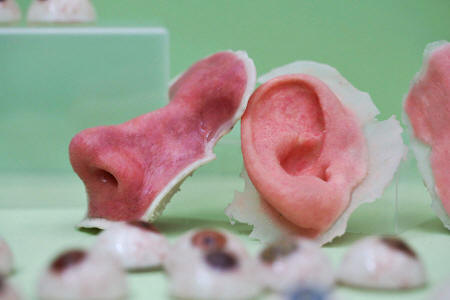|
Last month, doctors at the University Medical Center (UMC) in Holland have performed the first surgery using a skull made of plastic from a 3D printer.
After nearly 24 hours of surgery, the patient was fitted with this printed skull from Anatomics, one of the surgeons said:
Fripp Design and Research (FDR) have begun printing an estimated 150 prosthetic eyes to drive down cost.
These 3D printed manufactured eyes were made with slight variations in color to give them a more authentic look.
Keith Martin co-author of a study (Adult rat Retinal Ganglion Cells and Glia can be Printed by Piezoelectric Inkjet Printing) into the use and viability if 3D printed eyes:
Martin continued:
For more research, FDR have collaborated with the University of Sheffield (US) to design and manufacture 3D printed ears and noses via facial scans from patients.
These blueprints and created replacements could cost around $5,000 to the patient to have an artist first design their new ears or noses; then have a 3D printer manufacture the soft tissue body parts.
Using a CT scan, the technique photogrammetry takes an array of photos and "stitches the results into an editable CAD model."
Next sculptures are used to give the designers an idea of damaged areas and make the 3D parts as life-like as possible; matching the patient's skin color, birthmarks, wrinkles and pores.
Advancements in synthetic skin for prosthetics have given way to the same technology being utilized for artificial intelligence (AI).
Experiments in "epidermal electronics" have produced a skin-like creation that is self-healing.
Zhenan Bao, chemical engineer at Stanford University has developed a polymer that incorporates nickel atoms that allows electrons to "jump" between the mental atoms. The polymer is sensitive to pressure and tension.
The jumping produces the sensation of feeling. And when the "skin" is cut, it regenerates and retains 98% of its original conductivity (see 'An electrically and mechanically self-healing composite with pressure- and flexion-sensitive properties for electronic skin applications').
Not Impossible Labs (NIL) have created a way to use a 3D printer to manufacture limbs for amputees.
Mick Ebeling, co-founder of NIL explained that this corporation,
A prosthetic arm would be printed for an estimated $100 and take no more than 6 hours to produce.
The 3D printed arm could not lift heavy objects, have precise control over fingers and special attachments would be needed to use utensils.
|

